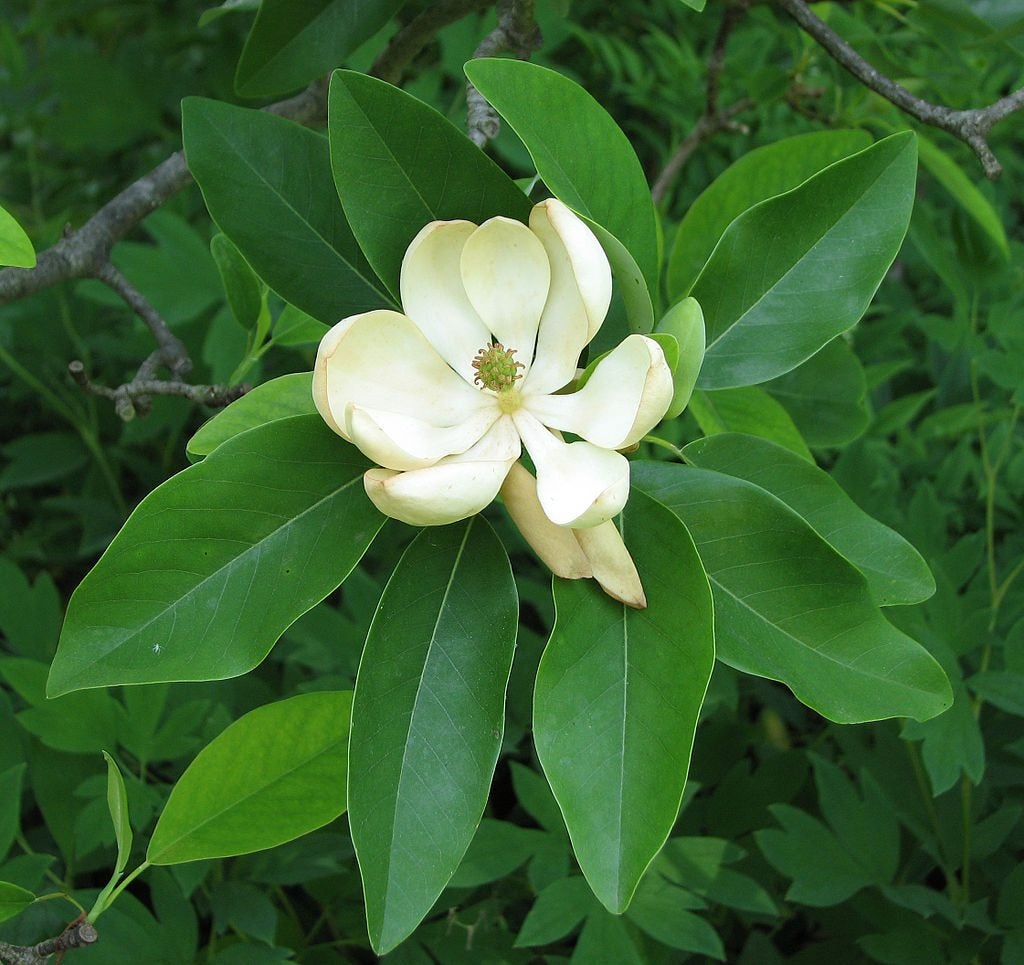Sweetbay Magnolia Care: Tips For Growing Sweetbay Magnolias


All magnolias have unusual, exotic-looking cones, but those on a sweetbay magnolia (Magnolia virginiana) are showier than most. Sweetbay magnolia trees feature creamy white spring and summer flowers with a sweet, lemony fragrance and leaves that flutter in the slightest breeze to flash their silvery undersides. The fruiting cones consist of a group of pinkish colored fruit that burst open to release the seeds when ripe. These outstanding ornamental trees create less mess than other magnolia tree species.
Sweetbay Magnolia Information
Sweetbay magnolias can grow 50 feet (15 m.) tall or more in warm, southern climates, but in cool areas it rarely exceeds 30 feet (9 m.). Its sweet fragrance and attractive shape make it an ideal specimen tree. The flowers have a sweet, lemony scent while the leaves and twigs have a spicy fragrance. The tree benefits wildlife by providing cover and nesting sites. It is a larval host for the sweetbay silkmoth. Early American settlers called it “beaver tree” because the fleshy roots made good bait for beaver traps.
Sweetbay Magnolia Care
Plant sweetbay magnolia in narrow corridors or urban areas where you need a compact tree. They need full sun or part shade in medium-moist to wet soil. These trees are often classified as wetland plants and even with irrigation, you won't have any luck growing sweetbay magnolias in dry soils. The trees survive winters in USDA plant hardiness zones 5 through 10a, although they may need protection during severe winters in zone 5. Surround the trees with a thick layer of organic mulch and irrigate as necessary to keep the soil from drying out. The tree benefits from a balanced, general-purpose fertilizer for the first three years. Use one cup of fertilizer the first and second year, and two cups the third year. It doesn't usually need fertilizer after the third year. Maintain a slightly acid pH of between 5.5 and 6.5. In alkaline soil the leaves turn yellow, a condition called chlorosis. Use sulfur to acidify the soil, if necessary. Sweetbay magnolia trees are easily damaged by flying lawn debris. Always point the lawnmower debris away from the tree or use a debris shield. Allow a distance of a few inches (8 cm.) with a string trimmer to prevent damage.
Gardening tips, videos, info and more delivered right to your inbox!
Sign up for the Gardening Know How newsletter today and receive a free copy of our e-book "How to Grow Delicious Tomatoes".

Jackie Carroll has written over 500 articles for Gardening Know How on a wide range of topics.
-
 4 Superfast Composting Methods: Turn Waste Into Garden Gold In 30 Days Or Less
4 Superfast Composting Methods: Turn Waste Into Garden Gold In 30 Days Or LessTry the fastest composting methods to turbocharge your pile and transform kitchen scraps and garden waste into finished compost in just a few weeks.
By Mary Ellen Ellis
-
 Best Spider Plant Soil – Complete Soil Guide And Expert Tips For Keeping Plants Happy
Best Spider Plant Soil – Complete Soil Guide And Expert Tips For Keeping Plants HappySpider plants are fun and easy plants to grow, but what is the best soil for a spider plant? Selecting the right soil is important so they can thrive.
By Bonnie L. Grant